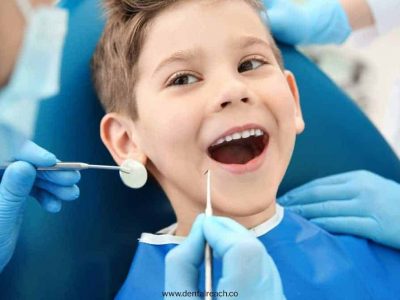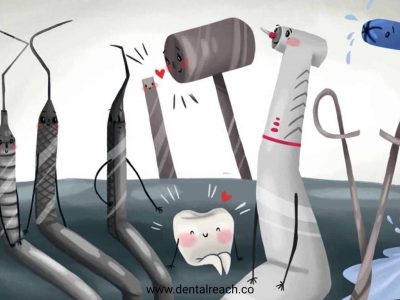Growing up our parents had interesting elucidations to advocate our shedding of teeth: the famous story of tooth fairies, but how well is it known that tooth fairies do not only replace the milk teeth but also can save them in case of germ attacks? We dentists, are nothing but the real-world version of tooth fairies who have established advanced supremacies and technologies to save the deciduous dentition from intentional extractions and early exfoliations. With increasing carbohydrate diet in children like excessive consumption of sugar-coated chocolates or milk through bottle overnight, the early childhood caries and rampant caries have been trending diagnosis before clinicians, and therefore in the era of aesthetic and conservative dentistry, the preferment of conservation and minimal intervention in dentistry has taken a flight toward the horizon. Saving deciduous teeth is necessary before its natural exfoliation and this can be achieved beautifully in technological dentistry termed as ‘Pulp Therapy’. Pulp Therapy or Vital Pulp Therapy is a technique which is supported through combination factors out of which the first main factor being the early diagnosis and treatment planning. It not only helps in preserving the arch integrity by sidestepping malocclusion but also upholds the confidence of patients and preserves their smile without hampering their daily chores. Other factors include peri-radicular area disinfection, homeostasis, blood supply to the teeth and severity of inflammation.
Vital pulp therapy has two different but significant approaches which can be broadly classified as indirect pulp capping and direct pulp capping. To understand the concept, a need for early diagnosis is necessary; early diagnosis as in, if a tooth has no signs and symptoms of pulp involvement with minimal or no inflammation, then condition of reversible pulpitis can be treated by the technique indirect pulp capping, whereas in case the injury has reached the pulp but vitality and integrity is still preserved, treatment regime follows direct pulp capping route, both being the treatment of choice in case of a vital tooth. When we discuss vital pulp therapy via its treatment regimes, indirect pulp therapy includes restoration of deep dental caries along with use of biomaterials like mineral trioxide aggregate and bio dentin, these help in regeneration of tooth structure such as dentin lost by destructive demineralising activities of caries. Indirect pulp capping can be defined theoretically as “a procedure on which a material is placed on a thin partition of remaining carious dentin that, if removed, might expose the pulp in immature permanent teeth. This technique shows some success in teeth with the absence of symptomatology and with no radiographic evidence of pathosis” By these procedures we not only achieve the goals of minimal intervention dentistry but also, we move from extension for prevention to prevention of extension, and as an end consequence we have a vital tooth with its complete functionality achieved. Direct pulp capping, on the other hand, is a small exposure to a pulp with an intent to conserve the vitality of the tooth. The main component of direct pulp capping refrains itself to pulpotomy procedures.
Pulpotomy is defined theoretically as “surgical removal of entire clinical pulp, leaving intact vital tissues in the canal, followed by placement of a medicament or dressing over the remaining pulp stump in an attempt to promote healing and retention of this vital tissue.” In a concept of clinical dentistry, a pulpotomy is a procedure which refers to removal of the effected or infected pulp horns, it is classified into two broad types as partial and total pulpotomy. Apart from these broad types, it can also be classified as devitalisation, preservation and regeneration practices. A partial pulpotomy is precise removal of a small portion or single vital coronal pulp horn and preservation of the remaining coronal and radicular pulp, usually done in posteriors which have multiple pulp horns and in case teeth are subjected to trauma, a modification is suggested termed generally as Cvek Pulpotomy. It involves removal of 2mm of inflamed coronal pulp with a sterile bur with a high-speed handpiece cooled with a sterile solution. Another pulpotomy method which has been advocated studied and modified by famous dental practitioners like Sweet, Doyle, Garcia and Godoy is clinically termed as Formocresol Pulpotomy or 5-minute pulpotomy. The exact magic of formocresol pulpotomy is through the agent called Buckley`s solution, which is nothing but 20% formocresol in 1:5 dilution. Formocresol binds and renders tissue incapable of autolysis, but capable of replacement by granulation tissue. It would not be incorrect to address formocresol pulpotomy as total pulpotomy where involvement of all the coronal pulp horns in posteriors and complete coronal pulp in anterior teeth takes place, gradually following the principles of devitalisation technique of pulpotomy. The other devitalisation techniques include electrocautery and lasers whereas in preservation pulpotomy agents like glutaraldehyde and ferrous sulphate are used in regeneration technique, it is inductive that there is the formation of calcific barrier or introduction of reparative dentin through agents like calcium hydroxide and bone morphogenic proteins.
Clinically, when the infection is extending beyond the coronal pulp and the periapical region is involved, as seen in the majority of the cases, the clinicians prefer to go with the procedure of pulpectomy. Pulpectomy is again theoretically defined as “removal of entire pulp and subsequent filling of the canals of the primary teeth with a certain resorbable material.” This procedure can be broadly classified based on the complexity of the case, as in single visit pulpectomy and multi visit pulpectomy.
The materials used in vital pulp therapy procedures are a matter of importance for any general practitioners, after all, it decides the fate of the teeth which is of key importance as discussed earlier in pulpotomy procedures, formocresol in the form of Buckley`s solution is a key important material. Formocresol has been debatable due to its three main harmful effects were seen almost in 10-15% of cases and local toxicity is a predominant adverse effect where actual healing of the pulp is never seen but a vital pulp starts progressing towards devitalisation. In certain cases, systemic toxicity is also observed with formocresol which is playing a key role in tampering with the DNA and RNA functionality and metabolism periods. The effect of formocresol on succedaneum tooth formation is also a key concern for practitioners. In pulpectomy procedures, the focus of practitioners has always been obturation of the canals with deciduous teeth were subjected to root resorption. Gutta Percha has always been out of the question but instead of that various materials like Zinc Oxide Eugenol, Iodoform paste, Calcium Hydroxide and Mineral Trioxide Aggregate are used. The trending material advocated widely by practitioners in India as well as abroad is Mineral Trioxide Aggregate which is a most biocompatible pulp-capping agent as of now with a compressive strength of 40 Mpa rising towards 60 Mpa roughly for a period of one month. The solubility rate is very low but it is commercially expensive. This material is an update which is preferred widely due to its capability of tissue regeneration, mutagenicity and reactivation of cementogenesis and dentinogenesis along with regeneration of periodontal ligament.
Vital pulp therapy in primary teeth is a necessity in current generation when dentistry is reaching heights of preservation of natural teeth. Early loss of deciduous teeth is not a good indication as the occlusion of succeeding permanent teeth depends on the existence of these teeth. These procedures not only help to maintain the occlusal integrity of the arch but also help in providing dentistry with a new standard in conservative medical science. The trending research on these procedures further includes achieving atraumatic and more biocompatibility procedures for patient co-operation and comfort and also understanding the commercial availability of dental materials for ease of cost reduction and longevity of the treatment.
References
¹page 278; Pulp therapy; Principles and practice of Pedodontics by Arathi Rao, third edition:2012, ISBN: 978-93-5025-891-0
Bonus: Download our monthly e-bulletin!Click here to get it
DISCLAIMER : “Views expressed above are the author’s own.”

















Comments